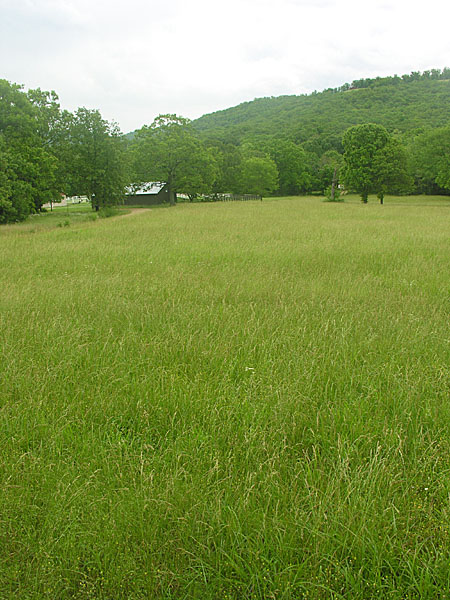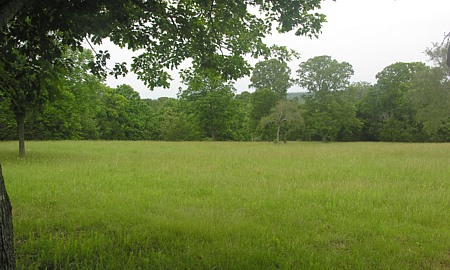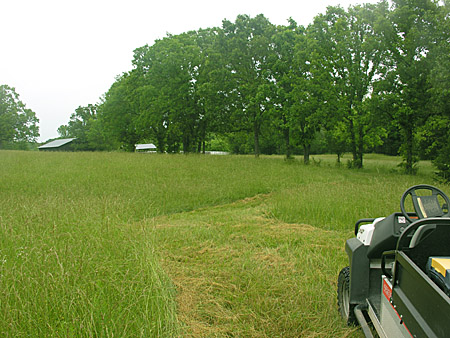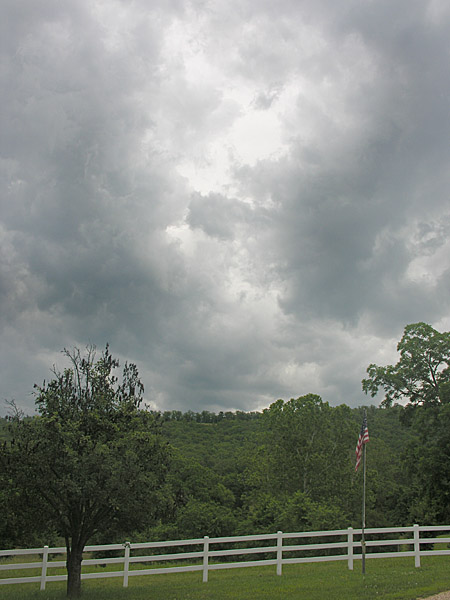With beef prices fluctuating around all time highs over the past several years, there has been an economic incentive for farmers to increase production, sometimes by pushing the grazing capacity of their pastures to the point that supplemental feed becomes a necessity. This, along with drought conditions that persist in a number of beef producing states, and substantially increased fuel costs, has pushed the price of baled hay up dramatically in recent years. Under these circumstances, you would think that it would be easy to find a local farmer who would jump at the chance to cut, bale, and haul away all the fescue and clover hay our hayfields have to offer, especially since I ask for nothing in return. Alas, as of now my batting average stands at a mere .500.  Here is the breakdown (names disguised to protect the guilty!)-
2001 – Farmer A accepted offer. He cut, baled, and removed the hay promptly. He also gave us a side of corn-fed beef in exchange.
2002 – Farmer A passed away prior to harvest. Farmer B cut, baled, and removed 1/2 the available hay, long after it had lost any nutrient value. The rest went to waste.
2003 – Farmer B committed to cut and bale the hay, but never showed up. The hay again went to waste.
2004 – Farmer C asked us for the hay. He cut, baled and removed the hay promptly. He also filled our barn with square bales of hay for our horses.
2005 – Farmer C asked us for the hay. He cut, baled and removed 1/2 of the available hay, but due to equipment failure, 1/2 of the hay went to waste.
2006 – Farmer C again asked us for the hay, but when it came time to harvest, his health precluded his doing the work. All of the hay went to waste.
You can see that in the past six seasons, we only had three complete harvests, which accounts for the .500 batting average.
2007 – Hey, that’s now! And this is what some of the hay fields look like today-
The grass is tall and the seed is developed to the point that it is ready for harvest. It has probably reached the peak of it’s nutrient value, and enough of the seed will be shed in the processing of the hay to allow for natural reseeding of the hayfield (for a previous look at this process, see Fescue to the Rescue).
The road that leads to our home runs along side the hay field pictured above, so there is no benefit to maintaining a trail through the grass.
In places that we want to maintain easy walking and riding trails, I will use the bush hog to create paths, like the one shown above. This path leads from our catfish pond over to the barn and paddock areas.
For this 2007 season, however, I think that the hay situation is well taken care of. Remember the cattle that breeched an old barbed wire fence, raided a hayfield and destroyed a game feeder, from a previous post entitled Invasion of the Corn Snatchers? Well, it turns out that the rancher who owns those cattle was renting a pasture from my neighbor. He and his son were out here daily, working on the fencing. When it became apparent to him that the fences were not up to snuff, he voluntarily trailered his cattle back to their former pastures, and our problem disappeared. He (I’ll call him Mr. Rancher) was very gentlemanly about the entire situation.
Mr. Rancher recently stopped by and inquired about the wonderful hayfields we have, and asked if we would like to make a deal with him to have the hay cut and baled. I told him he was welcome to take all the hay he wanted, as I hated to see it go to waste. He graciously accepted the offer, and I’m close to certain that he will actually harvest and bale our hay. Why? First, he’s a young man, so I doubt that health concerns will keep him from baling the hay. Second, he happens to be the service manager for our local Ford dealership, so I suspect that he knows the value and necessity of keeping his machinery well maintained.
As an aside, it can never be a bad idea to give the service manager at your local Ford dealer free hay – especially if you happen to own two Ford vehicles!
You may wonder why I am only “close to certain” the hay will get baled? Because, it seems that Mother Nature sometimes has a say in these matters, as well.
These are the skies we have been seeing on and off this past week. When processing hay, it is necessary to have several dry days in a row so that the grasses have a chance to dry a bit. If the grass is baled with too high a moisture content, then the heat that is generated within the bales as a result of the natural drying processes causes bad things to happen. Such as reduced nutritional value, formation of molds and fungi, and in some cases, spontaneous combustion. Barns have been known to burn to the ground as a result of storing bales of improperly cured hay.
So, Mr. Rancher and I both keep our watchful eyes looking toward the heavens above, waiting for that golden sun to shine down upon us with all it’s glory. Or else how will I ever be able to write a blog post with pictures of hay baled from these fields? Tell me, how will I?







The is the trouble with us “old people”, we have a nasty habit of dying off. hehe.
Pingback: Ranch Ramblins » Blog Archive » Boosting the Average